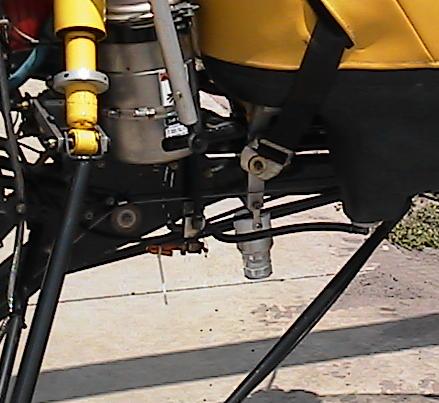|
Aircraft Strobe LightsTop mounted (upper) strobe.
Lower (belly) mounted strobe.
For strobe lights to get their great brilliance a power supply is needed. For tail or beacon type strobes the power supply may be part of the assembly. Wing tip or side lighting normally requires the use of a power supply but there are self-contained power units available and are pretty pricey. If you are not using the self contained units then remember you will need a place to mount these components when planning your installation. The power supply has a capacitor inside with high voltage, so follow the manufacturer's instructions. You can get a very uncomfortable jolt from the power supply and the wires if you are not careful so pay attention to the warnings. Due to the high frequency voltage of the strobe system you should use shielded wire to prevent strobe noise entering your avionics. If you are getting strobe noise after installation, be sure the shielding is properly grounded and the power supply case is grounded. If you still have noise from the strobe it may be located too close to an antenna, communications control head or you routed your strobe wires along with your avionics wire or coaxial wire. If you try to keep the strobe system isolated it should perform just as expected. Something to learn from: When I installed the strobes on our gyro, I wanted to test the circuit. A 12 volt battery charger was connected and when the switch was flicked for the strobes- nothing happened. I tried a battery and again got nothing- not a blink. We sent the power supply packs back to the manufacturer and they were repaired. When they came back, we hooked them up but they still wouldn't work for the test. Another call to the tech rep. and I was told the battery charger would not work. I asked why 12 volts from the charger would not work but from the battery it did? They really returned no good answer but my guess is a that the voltage is rectified through the charger and the strobe wants straight DC voltage.. Just guessing there. If you happen to select the same type model strobes as we did... now you will get a piece of paper with the kit explaining how to test the system - uh- with battery power. Sometimes good intentions can induce problems but I had the support from the manufacturer and we were able to not only fix my problem but come up with an easy fix to keep other installers from running into the same problem. Self contained units are more trouble free than a complete strobe system but mounting may be an issue. Self contained units can have a larger back mounting than a remote light mount, so be sure you have the room before your drill or cut for mounting. To complete a strobe light installation you will need not only the strobe mounts and power supply pack(s). You will also reguire the shielded wire, a switch and circuit breaker. The FAA has specific guidlines as it concerns strobe light location and area of coverage. Be sure to select the correect strobe(s) for the type of installation you are going to use. This should complete the external lighting options for your gyroplane. Now would be a good time to order the electrical components on your shopping list and get them on their way. You can install these items when they come in. Your build is really starting to gain some speed now and we will next look at some lighting to pepare the instrument panel and cabin. See Interior Lighting or Auxillary Lighting.
Aeroflash Signal
|


